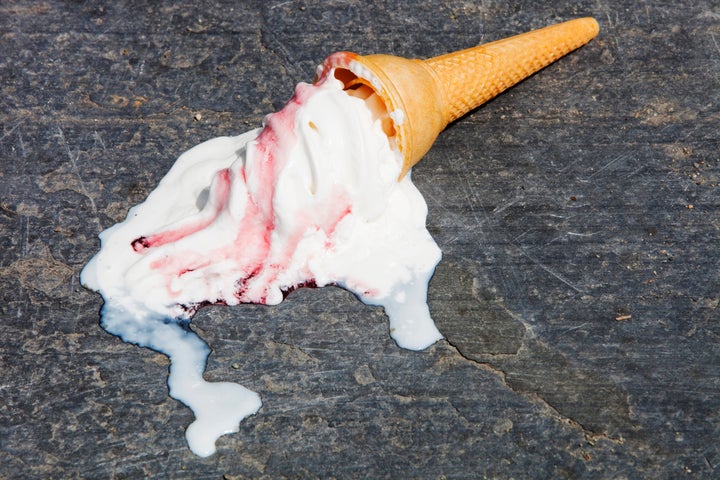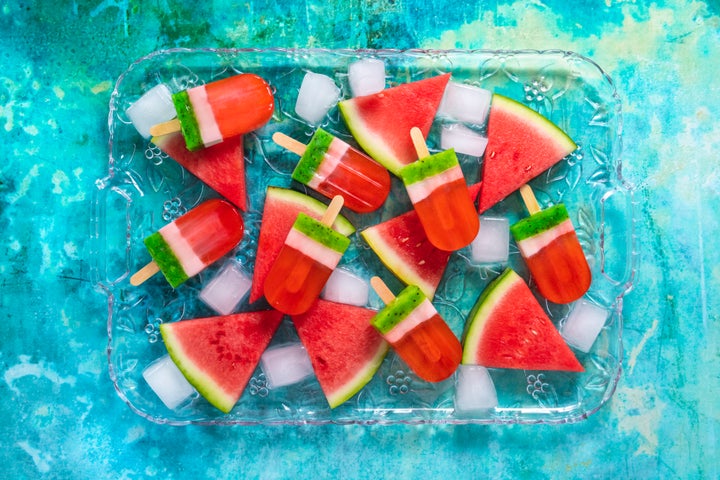Burnt skin, dehydration, and end-of-day exhaustion – the same things happen during every heatwave in Britain, no matter how many times we’re told to do the opposite.
The thing is, blistering hot weather doesn’t come around often in the UK – so when it does, Brits feel the need to enjoy every single second of it, before the inevitable return of the rain leaves us stuck indoors again.
Considering we’re in a mini heatwave with highs of around 30°C recorded in places like London, we’ve rounded up some of the mistakes Brits tend to make, and what they should be doing instead.
Not putting suncream on (obviously)
We can’t say these three things enough: as the song goes, wear sunscreen. You can burn even through cloud, and you should apply it throughout the day. Claire Knight, Cancer Research UK’s senior health information manager, says confusion and myths about sun safety put people at risk of skin damage.
“The sun isn’t only strong abroad,” she explains. “It can be strong enough to cause damage in the UK from the start of April to the end of September.” Getting sunburnt just once every two years triples the risk of melanoma, a potentially deadly form of skin cancer. You should regularly and generously apply sun cream with at least SPF 15 and 4 or more stars, even when it’s cloudy – and remember to do your eyelids too, as they’re easy to miss out.
Spreading suncream too thinly
Even if you’re using a high SPF, you could be leaving your skin vulnerable to sun damage because you’re applying sun cream too thinly.
A 2019 study by King’s College London found when applied in the typical way, SPF 50 suncream provides just 40% of the protection we expect it to because we’re simply not using enough of it. In order to stay protected, the researchers suggested holidaymakers use 3ml (around half a teaspoon) of suncream on each arm, the face and the neck, plus 6ml (a full teaspoon) to each leg, the front and the back of the body. You should then reapply at least three times per day.
All-day boozing
The sun sends many of us straight to a beer garden or out for a picnic. What’s better than cracking open a refreshing alcoholic beverage in the sun. And that’s okay. But the combination of sweating more in the heat, and going to the toilet more, means you’re losing more fluid than you take in.
This is a fast track to dehydration unless you replace that lost fluid by drinking water, says Drinkaware. Avoid excess drinking, or make sure you pair every single boozy bevvie with a pint of water.

Drinking your normal amount of water
You need more – much, much more. We’re advised to drink around eight glasses of water per day, but you need to increase this amount when it’s hot. If you’re heading out for a picnic, pack several bottles of water in preparation.
Dehydration is caused by not drinking enough water. Symptoms include: headaches, dark yellow and strong smelling urine, feeling dizzy, tiredness, dry mouth, and sweating less than usual. The general advice for curbing dehydration is taking sips of water, little and often, and gradually building up the amount you drink.
Staying out in the sun all day
We get it – why stay indoors when there’s beautiful sunshine and blue skies outdoors? But spending every single second of the day outside in a heatwave means your risk of ending up burnt, dehydrated, or with sunstroke are pretty high. Try to give yourself breaks from the heat – preferably between 11am and 3pm, suggests the NHS – and walk or sit in the shade.
Thinking ‘less is more’ when getting dressed
You might be tempted to grab your tiniest shorts and tight vest for a day in the sun, but that’s not always the best option. Firstly, it means you have more skin on show to the sun, meaning you’ll need to keep topping up suncream on whatever flesh is showing. Instead, it’s best to go for light, loose-fitting cotton clothes, recommends Oxford Health. And don’t forget your hat.
Burning your scalp
Even if you put suncream on, our bet is you probably miss your scalp. Suncream down your parting (or right across your head if you’re on the bald side), or simply wear a hat to avoid a stingy shower the next day.
Covering your head can also protect your hair, says hair expert Nicole Petty at Milk + Blush. “While hats do provide extra cover for the scalp against strong UV rays, they protect the hair from sun exposure, too,” she says. “When exposed to too much sunlight, the UVA and UVB rays can strip moisture from the hair and damage the hairs protein and cuticle, resulting in dry/brittle ends, frizziness, split ends, discolouration or even thinning.”
Keeping windows and curtains open all day
Oh no. No, no, no. You should close curtains on rooms that face the sun to keep indoor spaces cooler and remember it may be cooler outdoors than indoors. As simple as this may sound, keeping your blinds and curtains closed throughout the day deflects the sun’s powerful rays from heating your house.
You should also keep windows closed when it’s hotter outside than inside, advises the government. Open windows at night when the air is cooler, but close ground floor windows when you leave the house or go to bed.
Eating the wrong food
Foods that require more effort to digest – like those high in protein, sugar and fibre – are thought to generate more body heat, according to BBC Good Food. This includes ice cream – it cools you when you eat it, but it doesn’t last.
Warm chocolate is also a no-go, reports Love Food, and a “surefire way to headache city”. If you know you’re going to crave it, put it in the fridge and enjoy the sweet chocolate snap when you break a bit off.
Food can account for around 20-30% of our fluid intake, so it’s a good idea to choose things that contain more water than others. Think: watermelon, strawberries, cucumber, celery, melon.

Biochemist Shirley Corriher has previously spoken about the foods that work best to keep people cool. In 2012, she said fruits and vegetables are good in hot climates as they’re packed with water, Inside Science reported.
Exercise too much outdoors
None of us like to run outdoors when it’s freezing, snowing, or raining. But just because it’s a nice day, it doesn’t mean it’s the best time to go out for a jog. The NHS suggests avoiding exercising at the hottest part of the day – so between 11am and 3pm – and avoiding strenuous exercise in the heat at any time.
It might be better to go for that cycle in the early morning or evening to avoid getting dehydrated.
Taking your dog out for a lunchtime walk
“All animals can suffer in the heat and it’s really important that we take extra special care of our pets during extremely hot and extremely cold weather,” RSPCA animal welfare expert Dr Samantha Gaines told HuffPost UK.
Dogs still need exercise, but take advantage of the cooler hours first thing in the morning and evening. “If the pavement is too hot to touch with your hands, then it’s too hot for a dog’s paws,” said Gaines.
Having a glass of wine (or a cuppa) before bed
You should avoid caffeine or alcohol before bed – both cause dehydration which makes sleep harder. The ideal temperature for sleeping is between 16-18°C, according to The Sleep Council. Anything above 24°C causes restless and interrupted sleep.
Before hopping into bed make sure you opt for a sheet instead of a duvet, have a good fan set up (see our guide here) and have a quick cold shower to lower your body temperature.